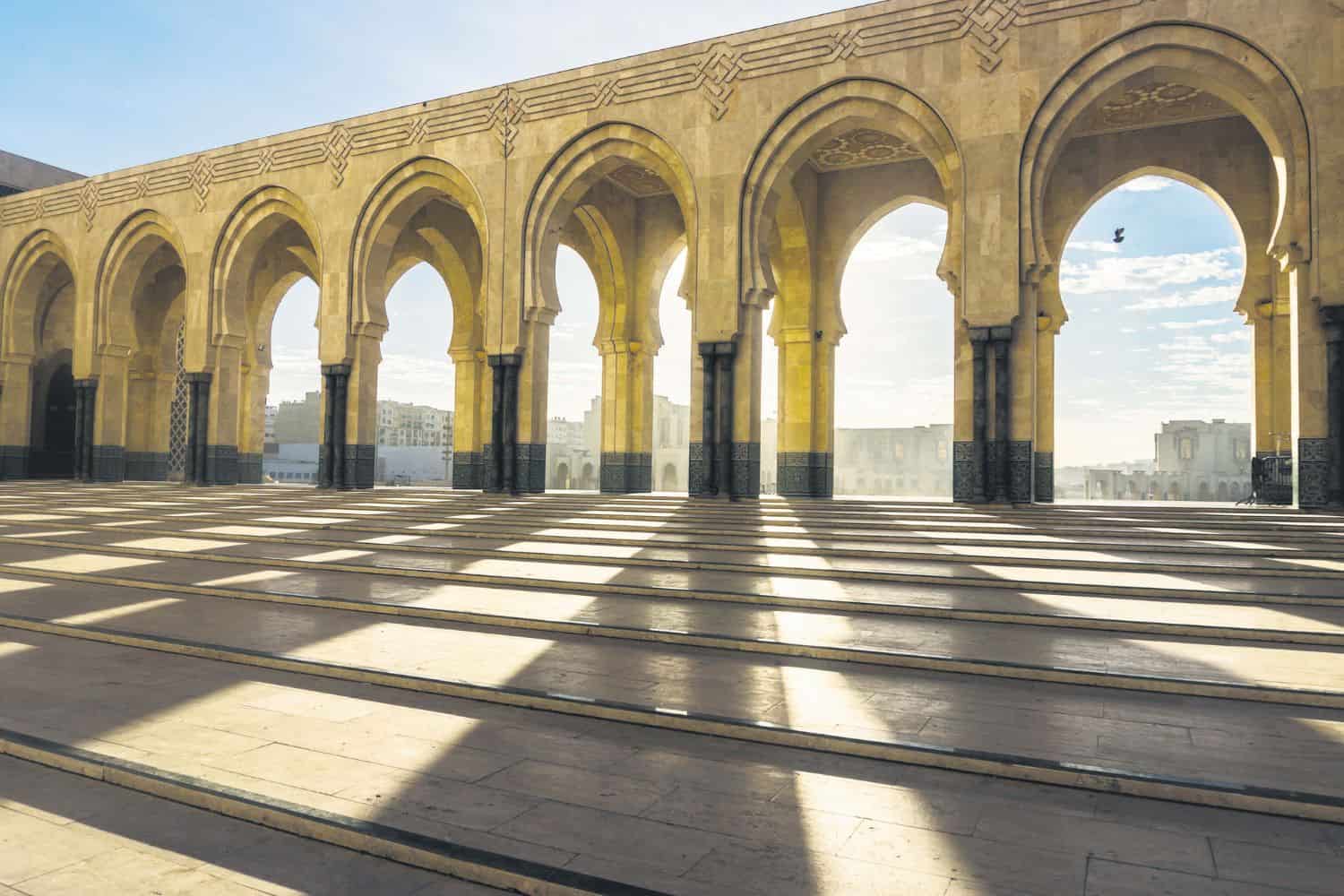Architectural preservation of arches and angels
Casablanca’s architectural heritage is not limited to its 18th-century walled city...

STRAIGHT-UP CURVES. Hassan II Mosque in Casablanca, Morocco. Pictures: iStock, AFP
For architecture fans, Casablanca offers a visual feast of Moorish tiles, ancient minarets and French colonial facades with Art Deco touches, but much still faces dereliction or is falling apart.
To highlight the rich heritage of the economic capital and encourage its preservation, guided walking tours have taken thousands of people on urban explorations on Ramadan evenings.
Normally, “the pace of life in Casablanca is so hectic that we don’t take the time to appreciate” the landmarks, said Mehdi Ksikes, 51, a company manager joining one of the “Heritage Nights” tours.
Ksikes said on a tour during the Muslim holy month of fasting that he was seeing the city of his birth with new eyes.
“I live here, but that doesn’t stop me from discovering things about my city.”
The visitors gazed intently at a facade in central Casablanca as Leila, a volunteer guide with heritage association Casamemoire, pointed out details most of them had missed.
Casablanca’s architectural heritage is not limited to its 18th-century walled city, but also icludes structures from its urban expansion during the French colonial period from 1912 to 1956.
From the early 20th century, European architects “worked to adapt progressive urban visions to Moroccan particularities”, said architect Karim Rouissi, who heads Casamemoire.
They brought the city to “the avant-garde of exploring 20thcentury architectural and urban theories”.
Architects drew inspiration from different styles, such as “colonial architecture in Algeria and Tunisia” and “new Moroccan architecture”, a fusion of classic European architecture and elements of Moroccan craftsmanship, Rouissi said.

ALSO READ: ‘Don’t leave your wife behind’: Dr Musa Mthombeni shares his top travel tips
Promoting the city’s unique heritage and preserving it
Casamemoire was founded in 1995 with the aim of promoting the city’s “unique” heritage and preserving it, after the demolition of several historic buildings.
Many of Casablanca’s historical buildings, such as the Wilaya (province) hall, the Court of First Instance and the Central Bank building are in the old administrative district in the city centre.
But traffic and noise “makes us not usually think about wandering around here”, said Bouthaina, a tour participant snapping pictures inside a building open to visitors for the night tours.
“I can now see the city from a different perspective,” said Bouthaina, who settled in Casablanca because of her work.
The Wilaya hall was inspired by designs from Siena municipal palace in Italy, with balconies overlooking the exterior – an uncommon feature in traditional Moroccan architecture.
Inside, a small garden sits in the middle of a spacious patio, allowing for natural ventilation, its columns and floors coated with handshaped glazed Zellige tiles.
At the Central Bank building, tour guide Leila pointed to polished stones clinging to the outside windows of the upper floor.
She noted the influence of the minarets of the Koutoubia Mosque in Marrakesh and its twin, the Giralda Mosque in Seville, built in the 12th century Almohad era, and later converted to a cathedral.
The building also bears Art Deco features, with a beehive-like glass roof inside and a wide gate, resembling the door of a safe.
While some of Casablanca’s architectural gems are well-preserved, others have fallen into disrepair or have been demolished, sparking public outrage.
A total of 483 buildings have been listed as national heritage, and 100 others are expected to be added soon, said culture ministry official Hassan Zohal.
The owners of national heritage buildings are required to preserve the original architecture of the facades when carrying out renovations or other work.
Yacine Benzriouil, a Casamemoire volunteer, said despite efforts, some buildings remain abandoned or closed. “The fight is to show the value of this heritage,” said Benzriouil.
“We need to think about how to keep these buildings alive before they are doomed to disappear.” Benzriouil is one of almost 200 volunteer guides leading the “heritage nights”.
In the administrative district, the Lincoln Hotel is undergoing reconstruction, restoring its original 1917 facade after decades of dereliction. “The conservation battle is half won,” he said.

NOW READ: UK royals open up new areas of palaces to summer visitors
For more news your way
Download our app and read this and other great stories on the move. Available for Android and iOS.









